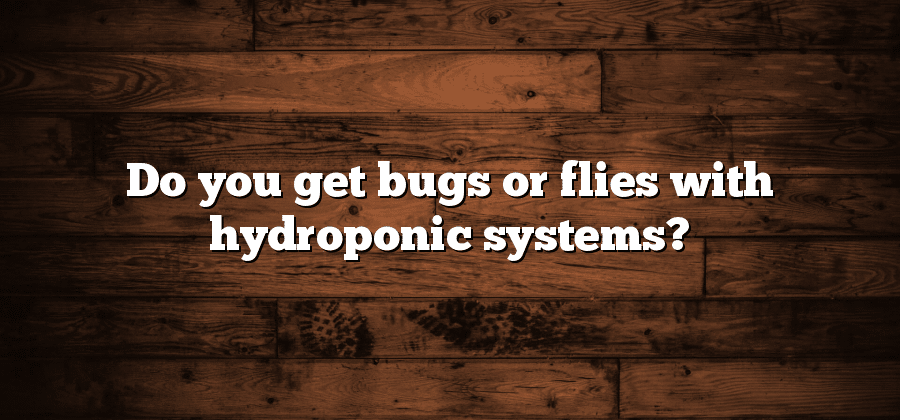Natural Pest Prevention Methods in Hydroponic Systems
One of the key challenges faced by hydroponic growers is dealing with pests and insects that can potentially damage their crops. However, employing natural pest prevention methods can help protect hydroponic systems and ensure healthy plant growth. The use of chemical pesticides is generally discouraged in hydroponics due to the risk of contaminating the nutrient solution and affecting the overall quality of the crops. Instead, growers can explore organic and environmentally-friendly alternatives to keep pests at bay.
Implementing physical barriers is a common and effective method to prevent pests from accessing hydroponic systems. This can be achieved by installing fine mesh screens or nets around the growing area to deter pests like flies, aphids, and whiteflies. Additionally, maintaining good hygiene practices by keeping the growing area clean and removing any decaying plant matter can help reduce the attractiveness of the system to pests. Regularly inspecting plants for signs of pest infestation and promptly removing any affected areas can also play a crucial role in preventing the spread of pests within the hydroponic system. By employing these natural pest prevention methods, hydroponic growers can ensure the health and productivity of their crops.
Effective Techniques to Keep Bugs and Flies Away from Hydroponic Systems
Hydroponic systems provide a controlled environment for plants to thrive without the need for soil. However, this optimized setup can also attract unwanted pests and flies that can damage the plants and disrupt their growth. To prevent these nuisances from infesting your hydroponic system, it is important to implement effective techniques to keep bugs and flies away.
One of the simplest and most effective methods to repel pests is by introducing beneficial insects into the hydroponic system. These insects, such as ladybugs and lacewings, are natural predators of common pests like aphids and whiteflies. By releasing them into the growing area, they can help maintain a natural balance and control the population of harmful pests.
Another technique is incorporating physical barriers to deter bugs and flies. For instance, installing mesh screens or netting around the growing area can prevent larger pests from gaining access to the plants. Additionally, using sticky traps strategically placed near the plants can catch flying insects and halt their breeding cycle.
Understanding the Role of Proper Ventilation in Preventing Insect Infestations
Proper ventilation plays a key role in preventing insect infestations in hydroponic systems. When it comes to indoor gardening, maintaining a well-ventilated environment is essential. Insects are attracted to stagnant air and high humidity levels, making them more likely to invade your hydroponic setup. By ensuring adequate airflow and ventilation, you can create an inhospitable environment for these pests.
One of the primary benefits of good ventilation is the reduction in humidity levels. Excessive moisture in the air can promote the growth of mold, fungi, and pests in your hydroponic system. By allowing fresh air to circulate through your grow area, you can effectively regulate the humidity and prevent the buildup of moisture. This not only discourages insect infestations but also helps to maintain the overall health of your plants. Additionally, proper ventilation helps in cooling down the temperature, which is another factor that can discourage insect activity.
Identifying Common Pests and Flies That Can Affect Hydroponic Systems
In hydroponic systems, it is important for growers to be aware of the common pests and flies that can affect their crops. These pests can infest the systems and cause damage to the plants, leading to a decrease in yield and quality. By identifying these pests early on, growers can take proactive measures to prevent infestations and protect their crops.
One common pest that can affect hydroponic systems is aphids. These small insects are known for their ability to reproduce rapidly and feed on the sap of plants. They can be found on the leaves, stems, and other parts of the plants, causing wilting, stunted growth, and yellowing of the leaves. Additionally, fungus gnats are also a common issue in hydroponic systems. These small flying insects lay their eggs in the growing medium, and the larvae feed on the roots of the plants. This can lead to root rot and nutrient deficiencies, affecting the overall health of the plants. By regularly inspecting the plants for signs of aphids or fungus gnats, growers can take immediate action to prevent infestations and minimize the damage caused to their crops.
Implementing Integrated Pest Management Strategies in Hydroponics
One of the most effective ways to maintain a healthy and pest-free hydroponic system is by implementing integrated pest management (IPM) strategies. IPM is a comprehensive approach that focuses on preventing and managing pest problems using a combination of biological, cultural, physical, and chemical techniques. By integrating various methods, hydroponic growers can minimize the use of harmful pesticides while effectively controlling pests.
One key aspect of implementing IPM strategies is early detection and monitoring of pests. Regular inspection of plants and monitoring for signs of insect infestations can help identify potential problems before they become widespread. This can involve using sticky traps, visual inspections, or even setting up sensor-based monitoring systems for early detection. By staying vigilant and proactive in pest monitoring, growers can take timely action to prevent pest populations from becoming too large and damaging their hydroponic crops.






